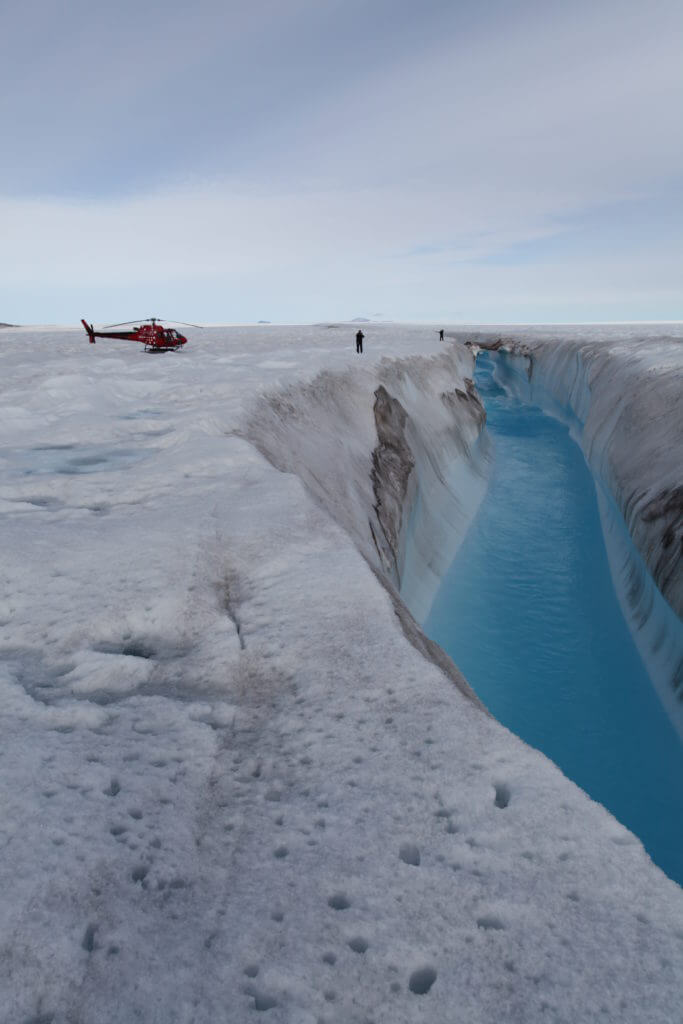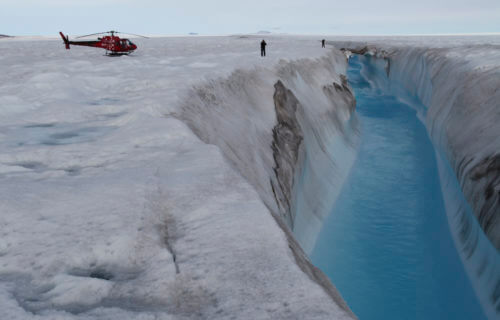HANOVER, N.H. — Greenland’s ice sheet is melting much faster than previously feared, according to new research.
Researchers say the trend could contribute up to six times more to global sea level rise by the end of the century than current climate models predict. The study is based on an analysis of the Northeast Greenland Ice Stream (NEGIS) that extends 372 miles into the landmass’s interior.
It could add a half-inch or more of water to sea levels by the year 2100, which is equivalent to the entire Greenland ice sheet’s contribution during the past 50 years. An international team combined satellite images and numerical modelling with GPS data collected over the past decade to reach these findings.
In 2012, the intrusion of warm ocean currents caused the floating extension of the NEGIS to collapse. It has accelerated ice flow and triggered a wave of rapid ice thinning that has spread upstream. The researchers found this thinning stretches inland from the Greenland coast as far as 124 to 186 miles. Other glaciers in Greenland may be suffering the same fate.
“Many glaciers have been accelerating and thinning near the margin in recent decades — GPS data helped us detect how far inland these changes happening near the coast propagate,” says study co-author Mathieu Morlighem, the Evans Family Distinguished Professor of Earth Sciences at Dartmouth, in a media release.
“The Greenland ice sheet is not necessarily more unstable than we thought, but it may be more sensitive to changes happening around the coast,” Morlighem continues. “If this is correct, the contribution of ice dynamics to overall mass loss on Greenland will be larger than what current models suggest.”
2 major Greenland glaciers are in danger
NEGIS connects the interior of the ice sheet to two marine-terminating glaciers, Nioghalvfjerdsfjord Gletscher and Zachariae Isstrom, which drain about 12 percent of the Greenland ice sheet. Over the past decade it’s been speeding up, but uncertainties over the flow rate have hampered the detection of ice flow acceleration upstream from the glacier terminus.
The study in the journal Nature indicates that from 2011 to 2021 NEGIS thinned by up to 10 feet. This will continue at an accelerated rate throughout this century.
“We can see that the entire basin is thinning and the surface speed is accelerating,” says first author Professor Shfaqat Abbas Khan from the Technical University of Denmark. “Every year, the glaciers we’ve studied have retreated farther inland, and we predict that this will continue over the coming decades and centuries. Under present-day climate forcing, it is difficult to conceive how this retreat could stop.”
Although winter 2021 and summer 2022 were particularly cold, the NEGIS glaciers have kept retreating. Northeastern Greenland is an Arctic desert where precipitation is less than an inch a year in some places.
This means the ice sheet is not regenerating enough to offset its melting. However, estimating how much ice melts and how far into the ice sheet the process occurs is not easy. The ice sheet’s interior moves less than three feet per year. It’s difficult to monitor, which limits the ability to make accurate projections.
“Models are mainly tuned to observations at the front of the ice sheet, which is easily accessible, and where, visibly, a lot is happening,” Khan adds. “Our data show us that what we see happening at the front reaches far back into the heart of the ice sheet.”

Sea levels could rise by more than 3 feet in the future
As more precise observations are included in models, it’s likely estimates of global sea-level rise such as the eight to 38 inches by 2100, projected by the U.N. Intergovernmental Panel on Climate Change, will need to be corrected upwards.
“We foresee profound changes in global sea levels, more than currently projected by existing models,” concludes study co-author Eric Rignot, professor of Earth system science at UC Irvine. “Data collected in the vast interior of ice sheets, such as those described in our research, help us better represent the physical processes included in numerical models and in turn provide more realistic projections of global sea-level rise.”
South West News Service writer Mark Waghorn contributed to this report.

